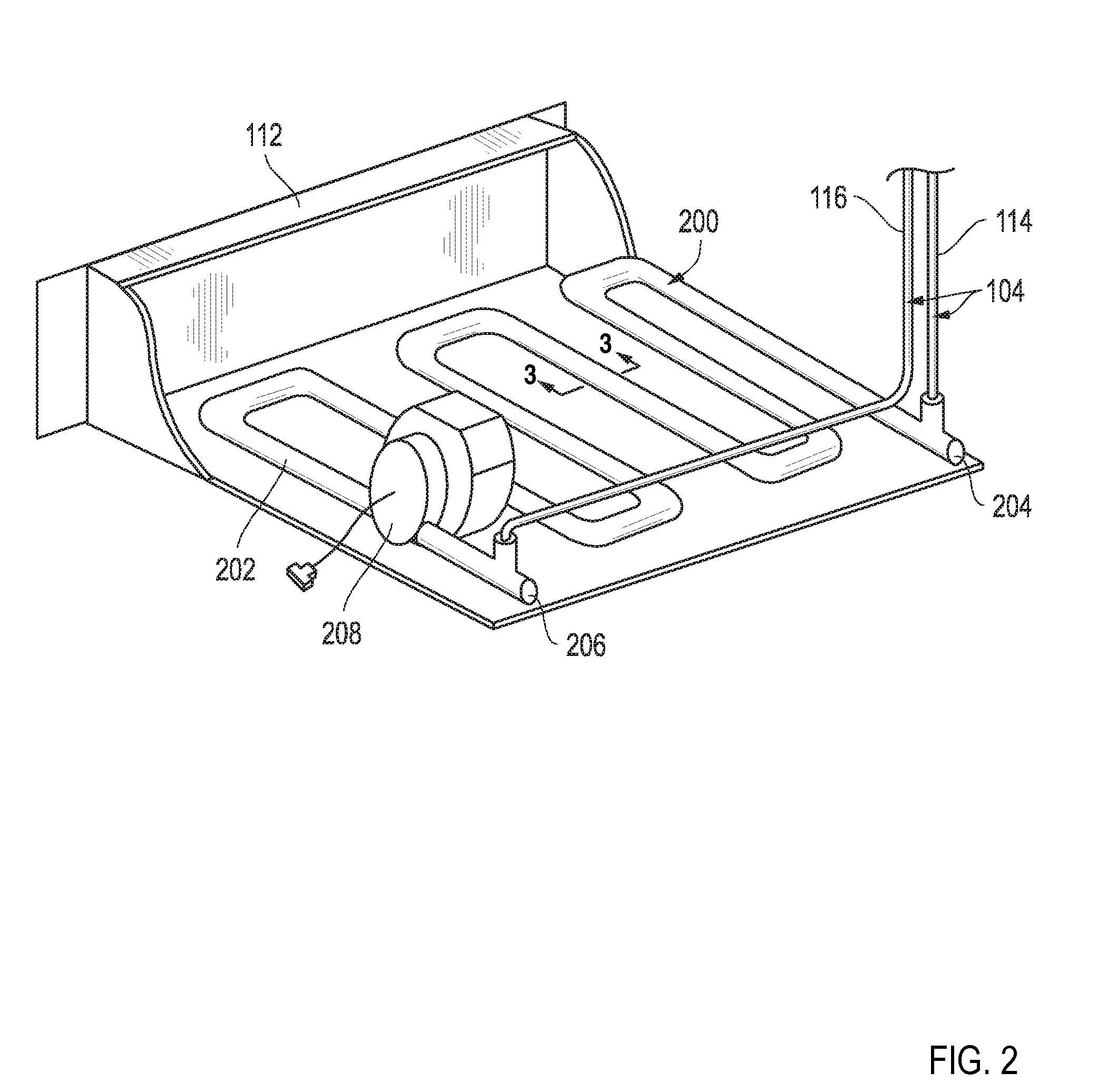Heat Transfer Systems for Dissipating Thermal Loads From a Computer Rack
a technology of heat transfer system and computer rack, which is applied in the direction of electrical apparatus, electrical apparatus contruction details, cooling/ventilation/heating modifications, etc., can solve the problems of generating a considerable amount of heat, consuming significant amounts of power, and operating these computer processors and memory modules requires a significant amount of power, so as to achieve the effect of dissipating thermal loads, dissipating thermal loads, and dissipating thermal loads
- Summary
- Abstract
- Description
- Claims
- Application Information
AI Technical Summary
Benefits of technology
Problems solved by technology
Method used
Image
Examples
Embodiment Construction
Detailed Description
[0017]Exemplary heat transfer systems for dissipating thermal loads from a computer rack, expandable heat transfer buses for dissipating thermal loads from a computer rack, and methods for configuring the dissipation of thermal loads from heat sinks in a computer rack according to embodiments of the present invention are described with reference to the accompanying drawings, beginning with FIG. 1. FIG. 1 sets forth a perspective view of an exemplary heat transfer system (100) for dissipating thermal loads from a computer rack (102) according to embodiments of the present invention. A thermal load is the thermal energy generated by an electronic component (108) such as, for example, a computer processor or memory module. A measure of thermal load is typically expressed in units of Joules. The rate at which an electronic component (108) produces a thermal load over time is typically expressed in units of Watts.
[0018]The computer rack (102) illustrated in FIG. 1 is ...
PUM
 Login to View More
Login to View More Abstract
Description
Claims
Application Information
 Login to View More
Login to View More - R&D
- Intellectual Property
- Life Sciences
- Materials
- Tech Scout
- Unparalleled Data Quality
- Higher Quality Content
- 60% Fewer Hallucinations
Browse by: Latest US Patents, China's latest patents, Technical Efficacy Thesaurus, Application Domain, Technology Topic, Popular Technical Reports.
© 2025 PatSnap. All rights reserved.Legal|Privacy policy|Modern Slavery Act Transparency Statement|Sitemap|About US| Contact US: help@patsnap.com



